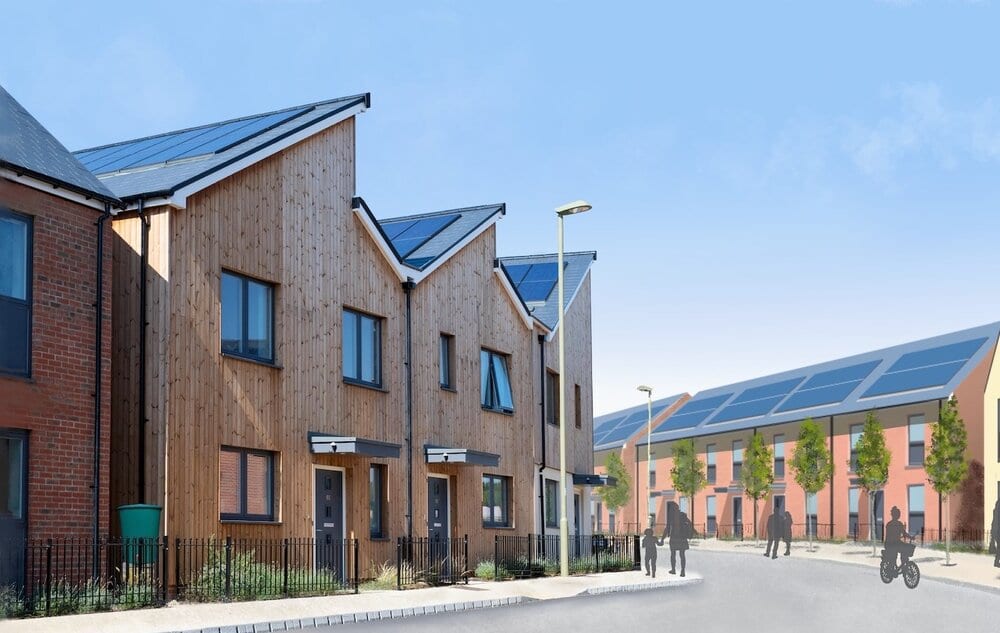Recently, a contact got in touch for thoughts on PassivHaus. This is what we replied:
I’ve not personally built one myself, but I’ve worked with a few people that have. I’ve also done some cursory analysis of energy certificates. On that basis I’ll share some tips that I think will keep build costs reasonable, result in low energy bills and low carbon emissions. The approaches I suggest below should be more cost effective than going fully certified PassivHaus but result in pretty much the same product. Here we go:
1.
Use SAP as a surrogate for PassivHaus planning package. You may know that an EPC certificate is required for building regulations in the UK. The PassivHaus Planning Package (PHPP) outputs are not recognised by building regulations. The EPC uses SAP methodology which churns out various numbers, including a SAP rating. The SAP rating scale goes up to 100. 100 means that heating and hot water bills are £0 per year (Note appliances such as fridges and TV’s are not included in this assessment). A new build home built today is typically around SAP 83, and average existing homes are ~ SAP 63. When I’ve seen the SAP ratings for PassivHaus Homes they are around SAP 95. I therefore suggest that you specify to builders and architects that you want SAP 95 minimum. They are not used to building to this specification, so you will need to hammer the message home. They can still use the PassivHaus principles for designing and building the house.

2.
Select architects and builders who are willing to adhere to the PassivHaus principles. The build principles are relatively novel so finding the right contractors with the correct mindset is crucial for the success of the project.
3.
Overheating – PassivHaus homes are very well insulated and airtight. If you are not using the PHPP which does analyse overheating, then you may want to be extra careful on this issue. The SAP methodology for overheating risk assessment uses historic summer temperatures, not projected warmer ones. The scale in the SAP methodology is “Insignificant risk”, “Slight”, “Medium” and “High”. Current building regulations allow “Insignificant risk”, “Slight” and “Medium”. To counter the faults in the SAP assessment you may want to consider specify “Insignificant” or “Slight” risk only and check the input details in the SAP assessor calculations, to make sure they match your planned home.
4.
MVHR – the home will most likely use recycled heat and solar gains to heat the home via a Mechanical Ventilation with Heat Recovery (MVHR) system. You do hear horror stories about them but these tend to be from poor installation rather than a function of the system itself. Whichever brand of MVHR you go for, see if they also have approved installers and use these. Common results of poorly installed systems include noisy systems and inaccessibility to the filter for cleaning.
5.
Hot water – although space heating will most likely be catered for by excellent fabric and recycled heat via the MVHR, energy is still required for hot water. First off, ensure water efficient hot water fittings e.g. aerated shower heads. Secondly consider Air Source Heat Pump (ASHP) specifically design for water heating.
6.
Solar PV – the MVHR and ASHP will require electricity to run, so consider solar photo voltaic (PV) panels. Integrated solar panels will look neater on the roof and will mean you don’t have to buy roof tiles for that part of the roof. Maximise the amount of PV on the roof. The panels are fairly cheap but scaffolding and labour add to the cost of install, so it makes sense to maximise as much as possible during the build stage.
7.
Solar thermal – although an established and efficient technology for heating hot water using the suns rays, they are quite intricate and you may want to consider whether or not you are the type of person that will maintain it to its full power. E.g. checking refrigerant levels, ensuring it’s working all the time etc.
8.
Other environmental things – don’t forget water efficiency (although building regulations are quite good at this now), ecological planting, responsibly sourced materials, internal recycling bins, cycle storage and flood risk
I hope all that helps!
Kind regards
Addendum 23/11/20
-
Just to be clear, if you are in a position to build full PassivHaus and accreditation, then please do so, it seems like a great system
-
Note, there is a known “performance gap” between design intent and actual final energy efficiency in our current building regulatory system. So if you are not using PHPP then put measures in place to ensure you get the energy efficiency you are after. This will most likely involve some kind of QA during build, plus post-construction test.
